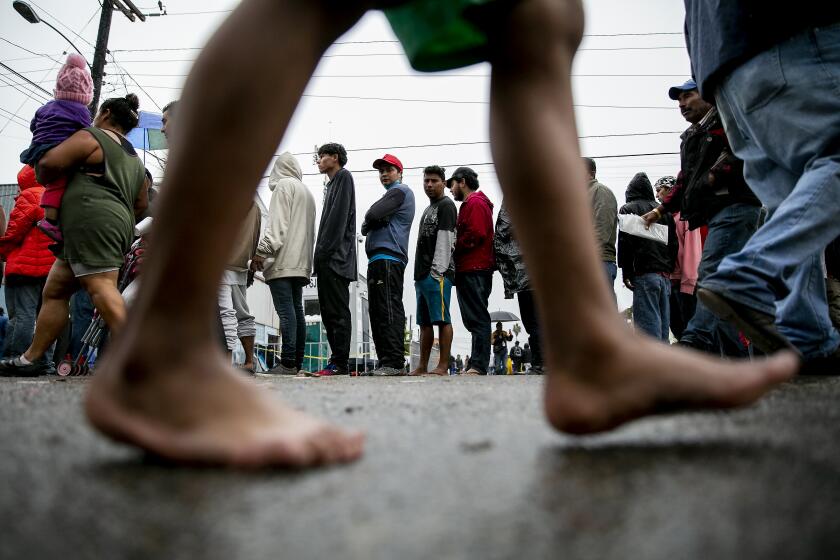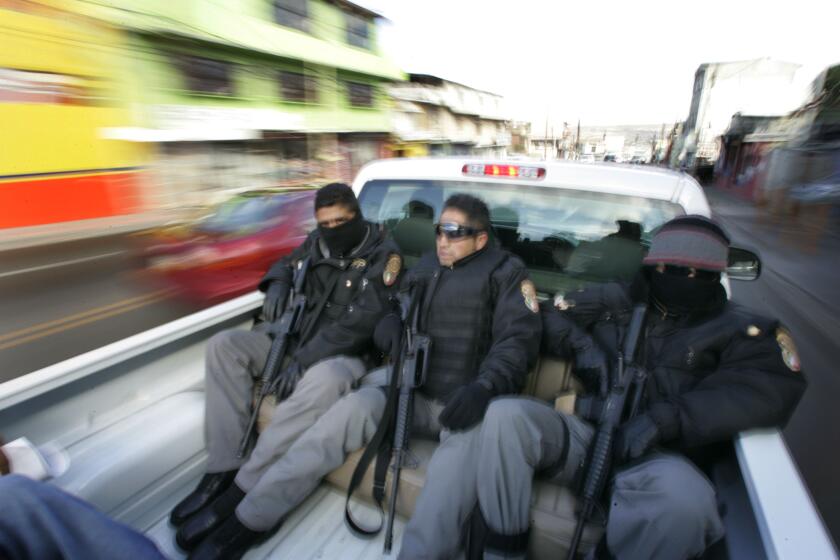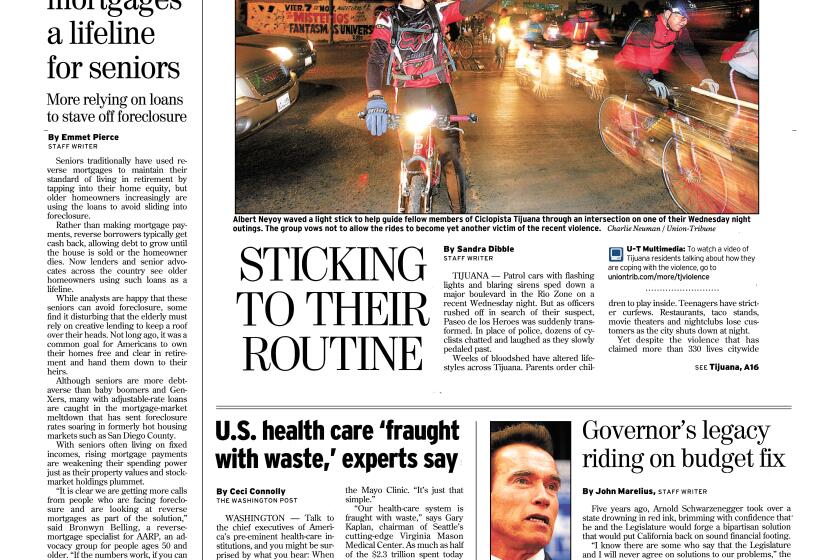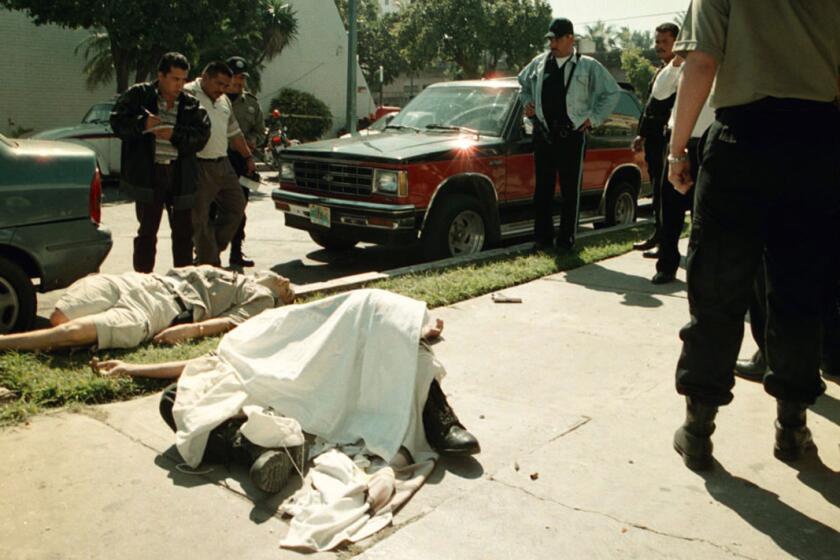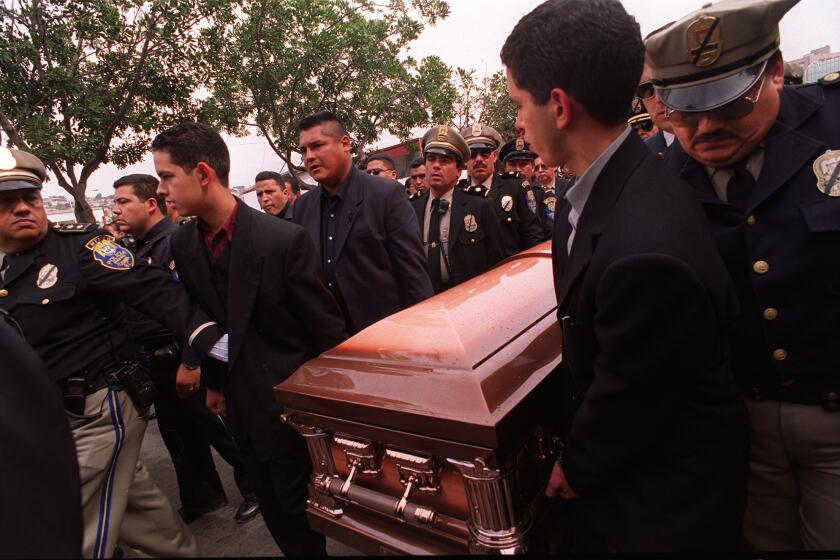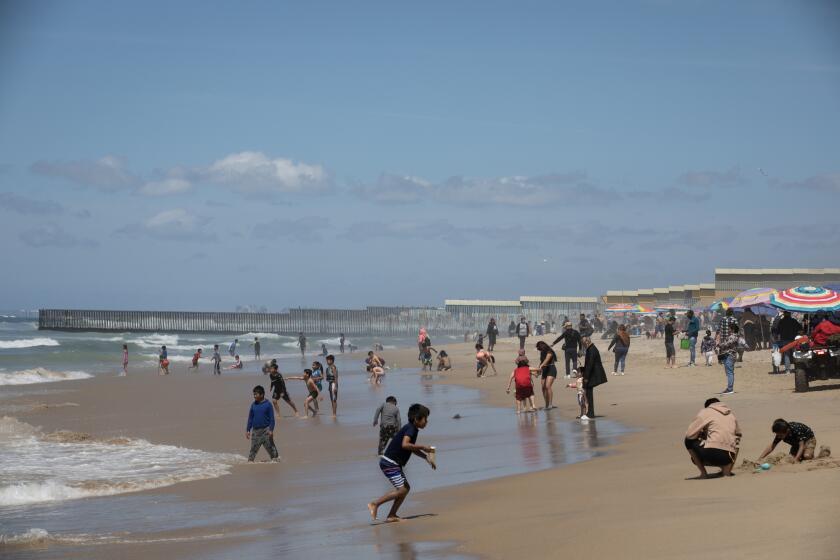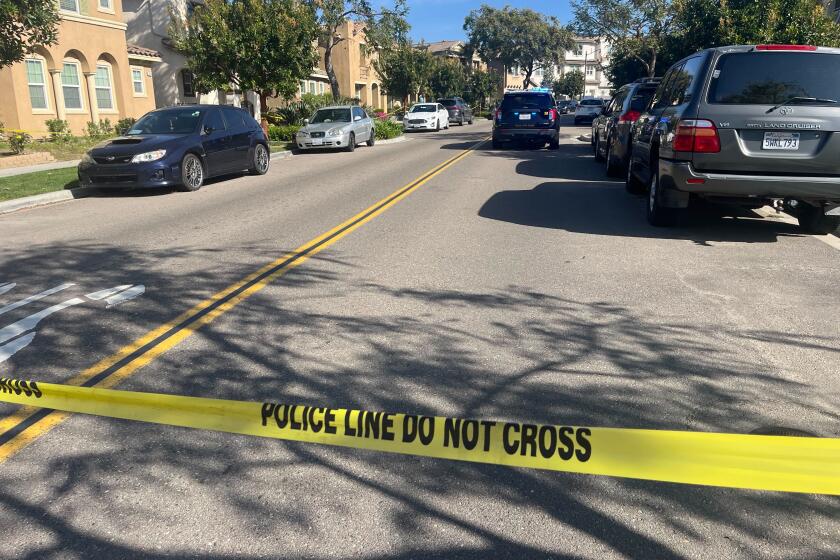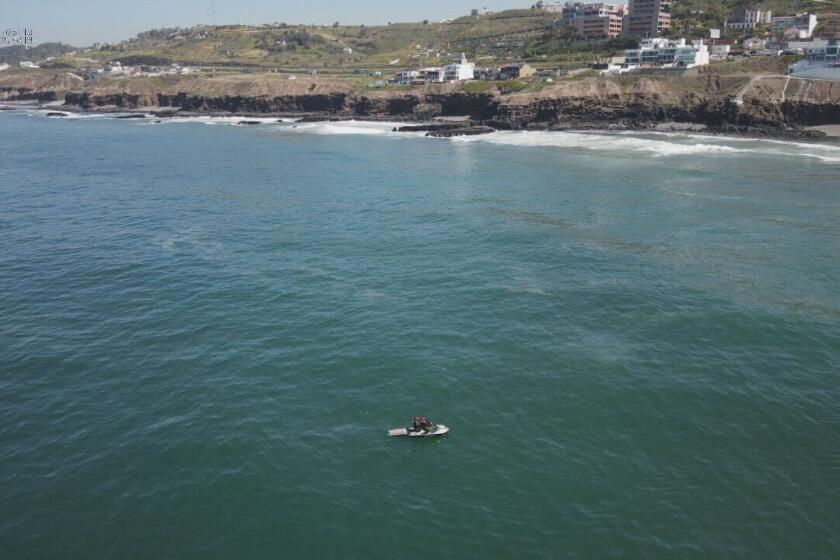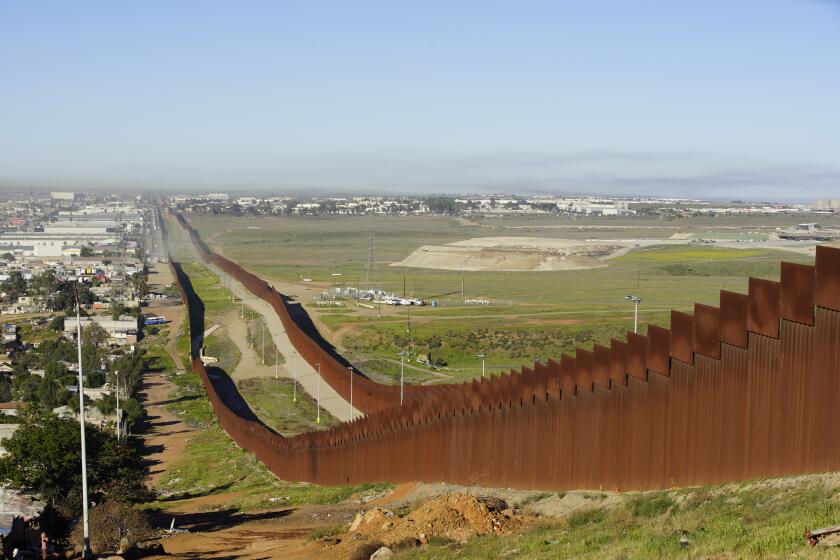Tijuana’s lifeguards prepare for rain
For most of the year, Juan Hernández and his team of Tijuana lifeguards keep their eyes trained on the Pacific Ocean, scouring the surf for distressed swimmers. But come rainy season, they turn their gazes inland.
They know that in neighborhoods across this city of more than 1.7 million residents, torrents of water can strike with deadly force, ripping through streets that wind past houses perched on steep hillsides, and swelling streambeds that cut through the narrow canyons.
“People are becoming more aware, as far as taking precautions,” Hernandez said one sunny morning last week, as he steered his pickup past a sedimentation tank in Colonia Obrera that already has become caked with mud and littered with tires and other debris from upstream. “But definitely, there are many people who still don’t want to understand.”
The prospect of heavy El Niño rains in the region this winter has sent the city into high gear. Public works employees have been busy clearing trash and debris from the city’s numerous storm drains and stream beds. Civil protection workers have issued warnings to some 6,000 families living in areas considered high risk. And the city’s firefighters and police officers — normally the first responders in emergency situations — have been receiving training to evaluate risks.
“It’s a city that has numerous hills, canyons, slopes,” said Tijuana Fire Chief Carlos Gopar. “There’s been settlement in areas that are not apt for housing, water will always find its course, and this generates risk.”
Gopar’s force of 403 firefighters includes 15 lifeguards who make up the department’s Aquatic Rescue Division, a group about two decades old. Hernández was a physical education teacher and longtime volunteer with the Tijuana rescue group Rescate Halcones, when he was tapped to start the division.
But his experience with water rescues predates his days with the Fire Department. A swimmer since his boyhood days in Mexico City, Hernández was a volunteer rescue worker in 1993 when Tijuana was hit with record floods that claimed 39 lives and left thousands homeless.
“We didn’t understand the phenomenon; we didn’t have experience with this,” Hernandez said. “There were a lot of people from the south of Mexico, who would say, ‘Back home it rains even harder,’” he said. “But the terrain here is very fragile.”
Hernandez has seen first-hand the dangers that can arise with little warning. He recalled a young woman trapped inside a vehicle sinking in a sedimentation tank in Canon Johnson — she was pulled out alive but ultimately did not survive, Hernández said.
Another incident in eastern Tijuana had a happier outcome: A car attempting to cross the Tijuana River channel was pulled by the current, but the driver was eventually rescued with the help of a tall firefighters’ ladder.
The city has expanded its system of storm drains and sedimentation tanks in recent years, but there are still many neighborhoods without adequate infrastructure. And while unplanned settlements still proliferate, they are not the only problem, Hernández said. Even some of the city’s approved housing developments are in harm’s way, in areas prone to flooding and landslides.
To cope with emergencies that may arise this rainy season, Hernández’s team started training in October at the thermoelectric plant in Rosarito Beach, where they are able to practice swift water rescues.
In Tijuana and other communities worldwide, “urban floods are extremely dangerous,” said Antonio Rosquillas, Baja California’s civil protection director.
Critical for emergency response is training firefighters and police officers, so they can evaluate situations and understand when to call for expert backup.
“The lifeguard is the expert,” Rosquillas said. They “need to be fully trained so they can rescue victims and not become victims themselves.”
Get Essential San Diego, weekday mornings
Get top headlines from the Union-Tribune in your inbox weekday mornings, including top news, local, sports, business, entertainment and opinion.
You may occasionally receive promotional content from the San Diego Union-Tribune.

